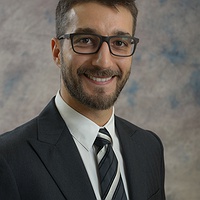All Events /
MAPP Lecture Series - Dr Matteo Seita
This lecture was recorded and can be viewed below.
We are delighted to welcome Dr Matteo Seita, Nanyang Technological University, Singapore, as our next guest speaker. The lecture will be given on Monday 28th March at 10.30 am Hadfield Building Lecture Theatre 20, and will be followed by an early lunch and an opportunity to speak with the lecturer.
Dr Seita is a Nanyang Assistant Professor in Mechanical and Aerospace Engineering at NTU, where he leads the Additive Microstructure Engineering Laboratory (AddME Lab). The goal of the AddME Lab is to assess and control the microstructure complexity brought about by additive manufacturing processes to enable the design of more sustainable metallic materials with improved reliability and performance. Owing to the multidisciplinary nature of his research, Dr Seita holds courtesy appointments in the School of Materials Science and Engineering and in the Asian School of the Environment. In the latter, he brings his expertise on materials degradation in harsh environments, which he developed during his postdoc in the Department of Materials Science and Engineering at MIT. He earned his PhD in Materials Science from ETH Zurich in 2012, where he developed new processes to control the microstructure of thin metal films by means of ion irradiation. In January 2018, Dr Seita was awarded the prestigious National Research Foundation (NRF) Fellowship—a S$3M individual grant for early-career scientists—to develop laser powder bed fusion processes to manipulate the microstructure of metal alloys.
Microstructure heterogeneity in metal additive manufacturing: A double-edged sword?
One of the defining features of fusion-based additive manufacturing (AM) processes is the localized melting of metal by a high-energy source, which fuses the material together with point by point and layer by layer across the entire build. The rapid solidification velocity, directional thermal gradients, and site-specific thermal buildups produced by this process yield parts with complex and heterogeneous microstructure. This heterogeneity is a double-edged sword. On the one hand, it leads to large property scatter and casts uncertainty over parts performance, hindering the adoption of additive technologies by the industry. On the other hand, it may impart exceptional mechanical properties, which even surpass those found in conventionally produced materials.
In this talk, I will present two ongoing research endeavours aimed at mitigating the detrimental effects brought about by microstructure heterogeneity in AM and at capitalizing on the opportunities it offers in the design of novel metal alloys, respectively. The first consists of developing a high-throughput characterization technique to enable large-scale microstructure analysis of AM builds. This technique - called DRM (directional reflectance microscopy) - enables mapping the atomic lattice orientation in crystalline solids in a similar fashion to standard electron or X-ray diffraction-based methods but using nothing more than a conventional optical microscope. The second consists of a new strategy to control the material’s microstructure site-specifically during laser powder bed fusion. This strategy - referred to as LEGO (layer-wise engineering of grain orientation) - produces parts that integrate regions of arbitrary geometry and controlled crystallographic texture. In the future, techniques such as DRM and LEGO may be routinely employed to facilitate the certification of AM parts, or to produce novel materials with “architected” microstructures and unique functionalities, respectively.
This will be a live event in LT20, Sir Robert Hadfield Building, Mappin St, Sheffield S1 3JD, followed by lunch in the Sir Robert Hadfield Building Turner Museum. The lecture will be recorded and made available on the website to those not able to attend in person. To register to attend please email mappadmin@sheffield.ac.uk, also stating any dietary requirements.

